Pain Relief
Formulated to alleviate various types and levels of discomfort, pain relief medication can help mild headaches to more severe pains such as arthritis or post-operative discomfort. Some products may target specific pain areas, like menstrual pain or migraines, while others offer general pain relief. Read More…

-
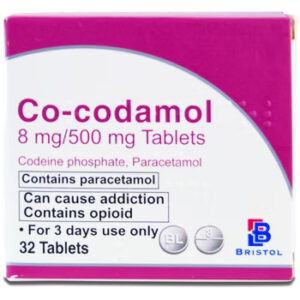
Co-codamol 8mg/500mg Tablets – 32 Tablets
- Treats acute moderate pain
- Active Ingredient: Codeine Phosphate And Paracetamol
- For short-term use
£3.49 Select options -
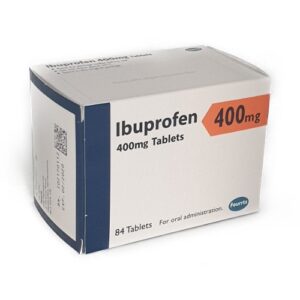
Ibuprofen Tablets
- Used To Relieve Mild To Moderate Pain
- Can Also Reduce High Temperatures And Swelling
- Active Ingredient: Ibuprofen
£1.99 – £5.89 Select options -
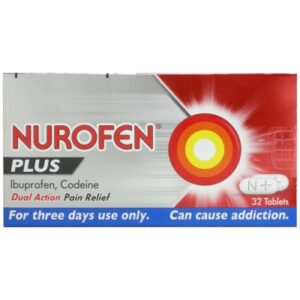
Nurofen Plus Tablets
- Contain codeine phosphate and ibuprofen
- Works to relieve pain and inflammation
- Dual action formula
£10.19 – £11.99 Select options -
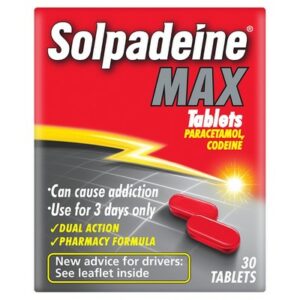
Solpadeine Max Tablets – 30 Tablets
- Fast-Acting Relief For Acute Moderate Pain
- Use For 3 Days Only
- Active Ingredients: Paracetamol And Codeine
£9.30 Select options -
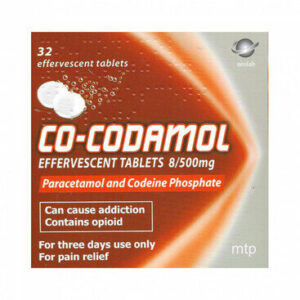
Soluble Co-codamol 8mg/500mg Effervescent Tablets – 32 Tablets
- Treats Acute Moderate Pain
- Active Ingredient: Codeine Phosphate And Paracetamol
- For Short-Term Use
£5.99 Select options -
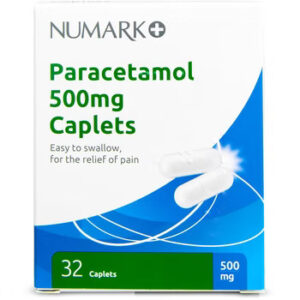
Paracetamol 500mg Capsules/Tablets
- Relieves Mild To Moderate Pain
- Active Ingredient: Paracetamol
- Reduces High Temperatures In Cold And Flu
£0.74 – £2.49 Select options -
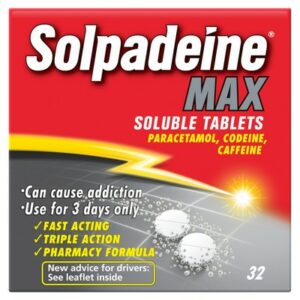
Solpadeine Max Soluble Tablets – 32 Tablets
- Fast-Acting Relief For Acute Moderate Pain
- Use For 3 Days Only
- Active Ingredients: Paracetamol, Codeine And Caffeine
£11.19 Select options -
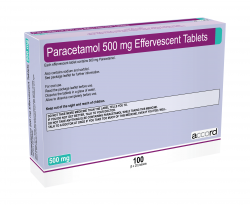
Soluble/Effervescent Paracetamol 500mg Tablets
- Relieves Mild To Moderate Pain
- Active Ingredient: Paracetamol
- Reduces High Temperatures In Cold And Flu
£5.39 – £15.99 Select options -
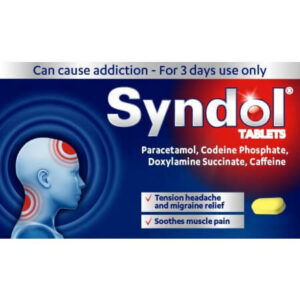
Syndol Tablets – 10 Tablets
- Tension headache and migraine relief
- Soothes muscle pain
- For 3 days use only
£4.99 Select options -
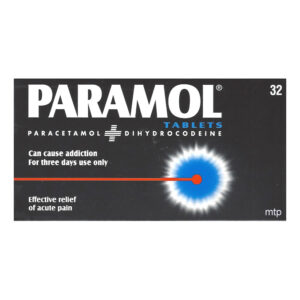
Paramol Easy To Swallow Tablets
- Effective Relief Of Acute Pain
- Use For 3 Days Only
- Active Ingredients: Paracetamol And Dihydrocodeine
£4.79 – £10.99 Select options -
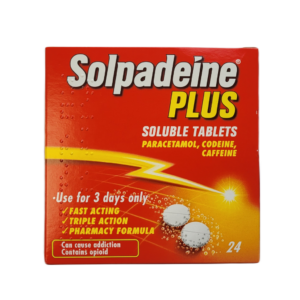
Solpadeine Plus Soluble Tablets – 24 Tablets
- Fast-Acting Relief For Acute Moderate Pain
- Use For 3 Days Only
- Active Ingredients: Paracetamol, Codeine And Caffeine
£9.99 Select options -
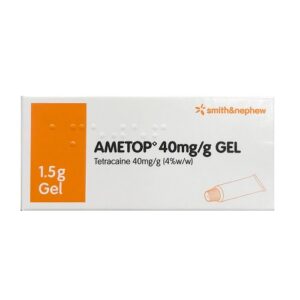
Ametop Gel 4% – 1.5g
- Local Anaesthetic
- Relieves Pain From Injections
- Active Ingredient: Tetracaine
£2.99 Select options -
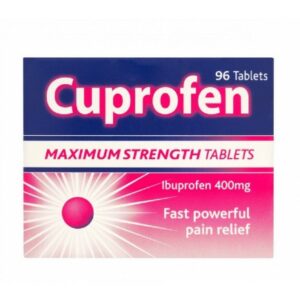
Cuprofen Maximum Strength Tablets
- Ibuprofen 400mg
- Fast, powerful pain relief
- Buy with confidence from a UK registered pharmacy
£3.55 – £9.65 Select options -
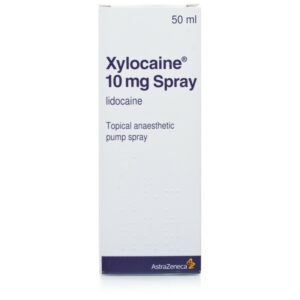
Xylocaine 10mg Spray
- Active Ingredient: Lidocaine
- Numbs & Reduces Pain
- Stops Reflex Gagging
£11.49 Select options -
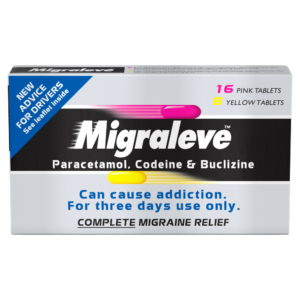
Migraleve Complete – Pink – Yellow – Tablets
- For 3 Days Use Only - Can Cause Addiction
- Active Ingredients: Paracetamol Codeine And Buclizine
- Effective Relief From Migraine Pain
£8.79 – £13.79 Select options -
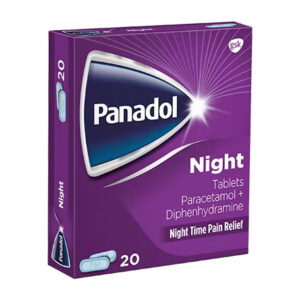
Panadol Night – 20 Tablets
- Effective Relief From Night Pain
- Active Ingredients: Paracetamol & Diphenhydramine
- Buy With Confidence From UK Registered Pharmacy
£6.99 Select options -
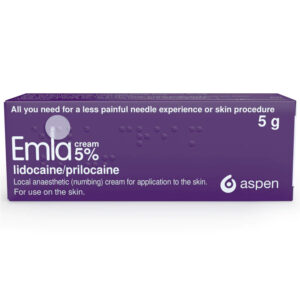
Emla Cream 5%
- Local Numbing Cream
- Active Ingredients: Lidocaine & Prilocaine
- Buy With Confidence From UK Registered Pharmacy
£5.49 – £27.49 Select options -
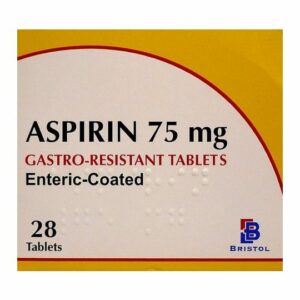
Aspirin 75mg Enteric-Coated Tablets – 28 Tablets
- Helps prevent further heart attacks and strokes
- Can be used after bypass surgery
- Dispersible tablets for those who cannot swallow whole tablets
£0.99 Select options -
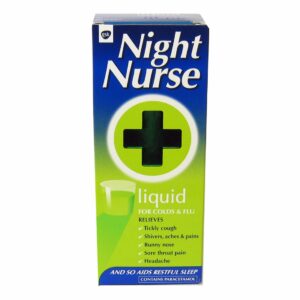
Night Nurse Syrup 160ml
- Relieves Cold And Flu Symptoms
- Active Ingredients: Paracetamol, Promethazine And Dextromethorphan Hydrobromide
- For Night-Time Use
£9.19 Select options -
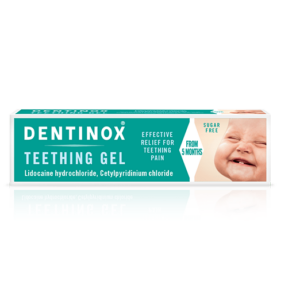
Dentinox Teething Gel 10g
- Effective Teething Pain Relief
- Active Ingredients: Lidocaine / Cetylpyridinium
- Buy With Confidence From UK Registered Pharmacy
£4.49 Select options -
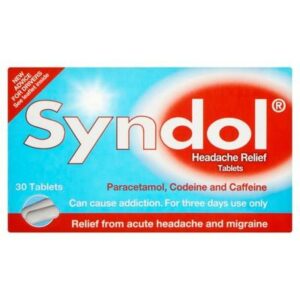
Syndol Headache Relief – 30 Tablets
- Active Ingredients: Paracetamol Codeine & Caffeine
- Effective Headache Relief
- Next Day Delivery Available
£6.39 Select options -
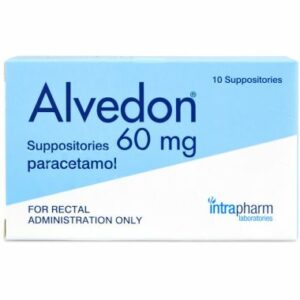
Paracetamol Suppositories (10)
- Effective Ache And Pain Relief For Children
- Suitable For Children From 3 Months And Up
- Buy With Confidence From UK Registered Pharmacy
£14.79 – £28.49 Select options -
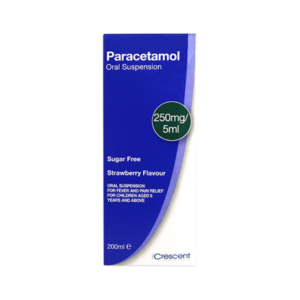
Paracetamol 250mg/5ml Oral Suspension
- Relieves pain and fever in adults and children over 6 years of age
- Active Ingredient: Paracetamol
- Effective in just 15 minutes
£5.19 – £29.99 Select options -
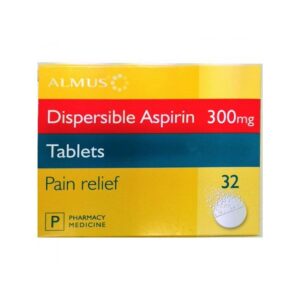
Aspirin Dispersible Tablets 300mg (32 Tablets)
- Helps Prevent Further Heart Attacks & Strokes
- Can Be Used After Bypass Surgery
- Buy Online With Confidence From UK Registered Pharmacy
£1.24 Select options -
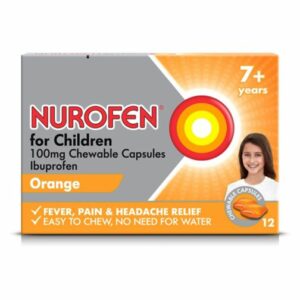
Nurofen For Children 100mg Chewable Capsules Orange Flavour – 12 Capsules
- Effective Pain Relief Treatment For Children
- Easy To Take
- Active Ingredient: Ibuprofen
£6.49 Select options -
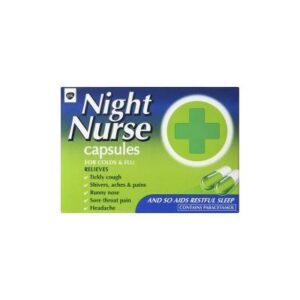
Night Nurse Cold And Flu Capsules – 10 Capsules
- Relieves Cold And Flu Symptoms
- Active Ingredients: Paracetamol, Pseudoephedrine Hydrochloride, Pholcodine, Promethazine Hydrochloride And Dextromethorphan Hydrobromide
- For 24 Hour Relief
£7.79 Select options -
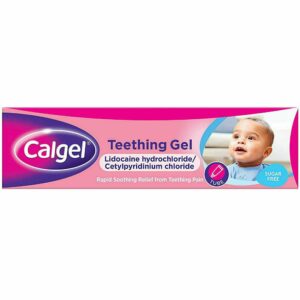
Calgel Teething Gel 10g
- Can Be Used From 5 Months
- Quickly Relieves Teething Pain
- Buy With Confidence From UK Registered Pharmacy
£4.29 Select options -
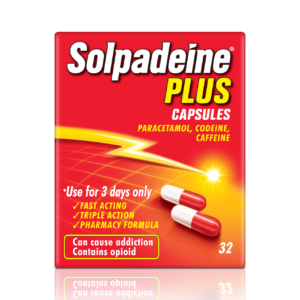
Solpadeine Plus Capsules – 32 Capsules
- Fast-Acting Relief For Acute Moderate Pain
- Use For 3 Days Only
- Active Ingredients: Paracetamol And Codeine
£9.49 Select options -
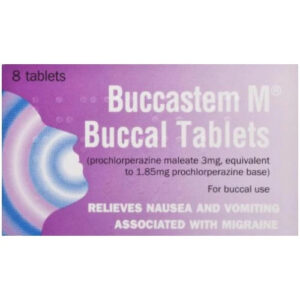
Buccastem M Buccal – 8 Tablets
- Active Ingredients: Prochlorperazine
- Relieves Nausea & Vomiting Associated with Migraine
- Buy With Confidence From UK Registered Pharmacy
£9.69 Select options -
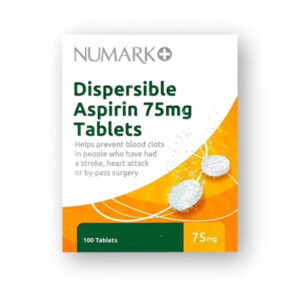
Aspirin 75mg Dispersible Tablets – 100 Tablets
- Helps prevent further heart attacks and strokes
- Can be used after bypass surgery
- Dispersible tablets for those who cannot swallow whole tablets
£1.99 Select options -
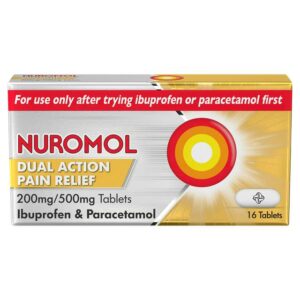
Nuromol Dual Action Pain Relief Tablets
- Effective Pain Relief
- Active Ingredients: Paracetamol / Ibuprofen
- Next Day Delivery Available
£3.99 – £9.49 Select options -
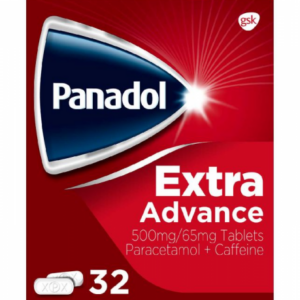
Panadol Extra Advance – 32 Tablets
- Active ingredients: Paracetamol & Caffeine
- Treats a variety of different aches and pains
- Fast acting
£4.50 Select options -
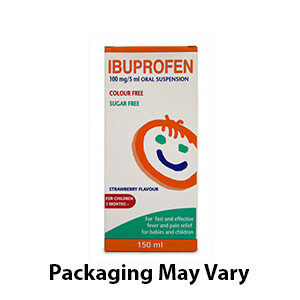
Ibuprofen Oral Suspension For Infants & Children Sugar Free 100ml
- Relieves Pain And Fever In Infants And Young Children
- Active Ingredient: Ibuprofen
- Effective In Just 15 Minutes
£4.79 Select options -
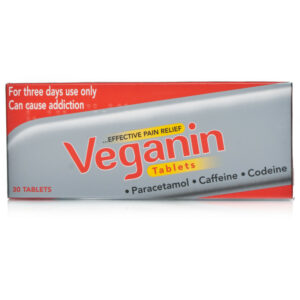
Veganin Tablets – 30 Tablets
- Treats Acute Moderate Pain
- Active Ingredient: Codeine Phosphate Paracetamol and caffiene
- For Short-Term Use
£5.59 Select options -
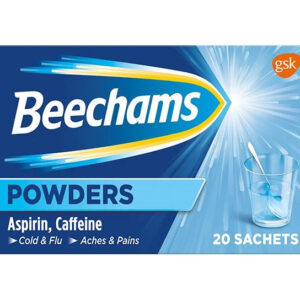
Beechams Powders Sachets
- Relieves Cold And Flu Symptoms
- Active Ingredients: Aspirin And Caffeine
- Also Treats Aches And Pains
£3.49 – £4.89 Select options -
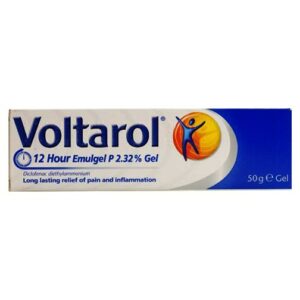
Voltarol 12 Hour Emulgel P 2.32% Gel – 50g
- Relieves Injuries And Pains In The Muscles And Joints
- Fast-Acting Anti-Inflammatory
- Active Ingredient: Diclofenac Diethylammonium
£13.49 Select options -
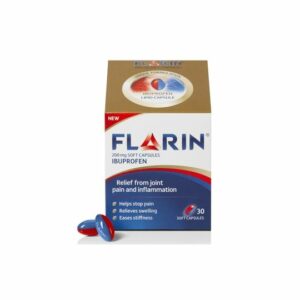
Flarin Lipid Capsules – 30 Capsules
- Relieves Rheumatic Or Muscular Pain
- Buy With Confidence From UK Registered Pharmacy
- Includes Free Prescription
£10.69 Select options -
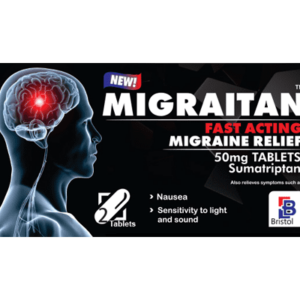
Migraitan 50mg Tablets – 2 Tablets
- Effective Migraine Relief
- Next Day Delivery Available At Checkout
- Buy With Confidence From UK Resgistered Pharmacy
£9.79 Select options -
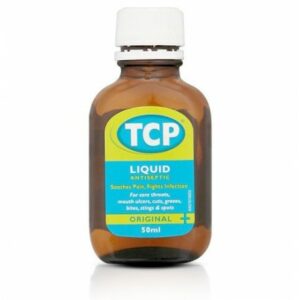
TCP Antiseptic Liquid
- Soothes pain, fights Infection
- For Use In Adults And Children
- Active Ingredients: Halogenated Phenols / Phenol
£4.39 – £6.80 Select options -

Flexiseq Osteoarthritis Max Strength Gel
- Relieves Osteoarthritis Pain And Lubricates Joints
- Active Ingredient: Sequessome Vesicles
- Drug-Free Formulation
£10.89 – £19.35 Select options -
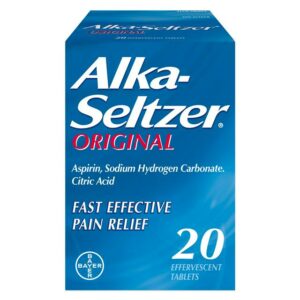
Alka-Seltzer Original – 20 Tablets
- Fast & Effective Relief From Upset Stomach
- Buy With Confidence From UK Registered Pharmacy
- Next Day Delivery Available
£6.09 Add to basket -
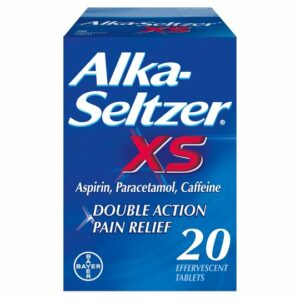
Alka-Seltzer XS Tablets – 20 Tablets
- Symptomatic Relief Of Colds And Influenza
- Effective reduction Of High Temperature
- Treats Mild To Moderate Pain In The Body
£6.89 Add to basket -

Algesal Local Analgesic Cream
- Local Analgesic To Relieve Pain
- Active Ingredient: Diethylamine Salicylate
- Buy With Confidence From UK Registered Pharmacy
£2.69 – £5.25 Select options -
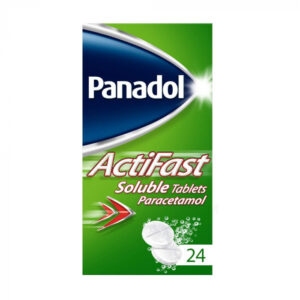
Panadol Actifast Soluble Tablets
- Pain reliever and fever reducer
- Soluble tablets
- Fast acting
£6.89 Add to basket -
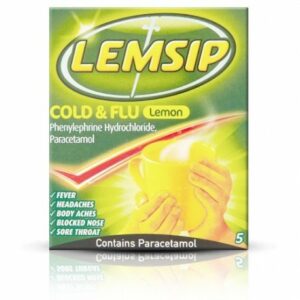
Lemsip Cold & Flu Lemon Flavour Sachets (5)
- Relieves Cold And Flu Symptoms
- Active Ingredients: Paracetamol And Phenylephrine Hydrochloride
- Stir Into Hot Water, Then Drink
£5.19 Select options -
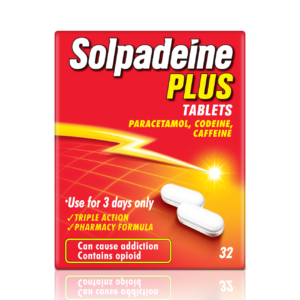
Solpadeine Plus Tablets – 32 Tablets
- Fast-Acting Relief For Acute Moderate Pain
- Use For 3 Days Only
- Active Ingredients: Paracetamol And Codeine
£9.29 Select options -
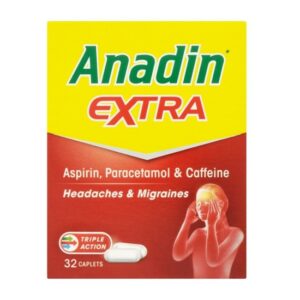
Anadin Extra (32 Caplets)
- Relieves Pain and Reduces High Temperature and Fever
- Buy With Confidence From UK Registered Pharmacy
- Next Day Delivery Available
£5.29 Add to basket -
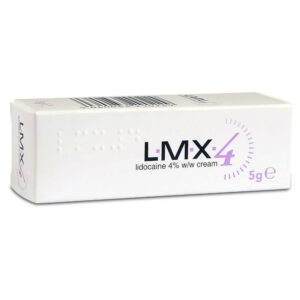
LMX4 Lidocaine 4% Cream – 5g
- Local anaesthetic
- Relieve pain whenever a needle needs to be inserted into a vein
- Active Ingredient: Lidocaine
£5.29 Select options -

Disprin Direct Chewable Aspirin – 16 Tablets
- Active Ingredient: Aspirin
- Effective Pain Relief
- Next Day Delivery Available at Checkout
£3.19 Select options -
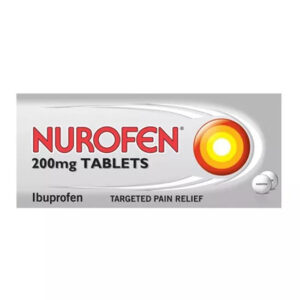
Nurofen 200mg Tablets
- Non-Steroidal Anti-Inflammatory
- Buy With Confidence From UK Resisgtered Pharmacy
- UK Nexy Day Delivery Availiable
£3.89 – £4.39 Select options -
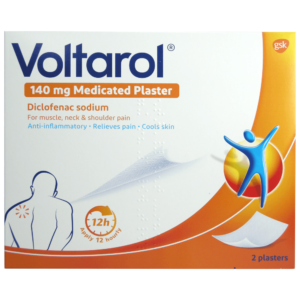
Voltarol Medicated Plasters 140mg
- Relieves Injuries And Pains In The Muscles And Joints
- Fast-Acting Anti-Inflammatory
- Active Ingredient: Diclofenac Diethylammonium
£12.39 – £21.99 Select options -
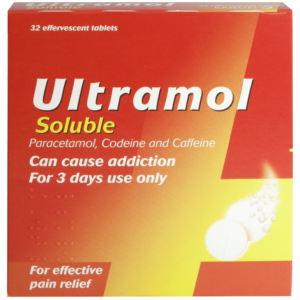
Ultramol Soluble Tablets – 32 Tablets
- Fast-Acting Relief For Acute Moderate Pain
- Use For 3 Days Only
- Active Ingredients: Paracetamol, Codeine And Caffeine
£5.69 Select options -
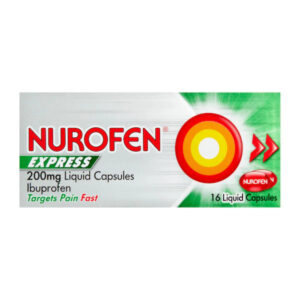
Nurofen Express Liquid Capsules 200mg
- Active Ingredient: Ibuprofen
- Targets Pain Fast
- Buy With Confidence From UK Resgistered Pharmacy
£4.79 – £10.09 Select options -
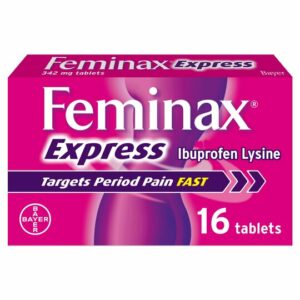
Feminax Express 342mg
- Active Ingredient: Ibuprofen Lysine
- Effective Treatment For Many Types Of Body Pain
- Targets Period Pain Fast
£4.22 – £6.09 Select options -
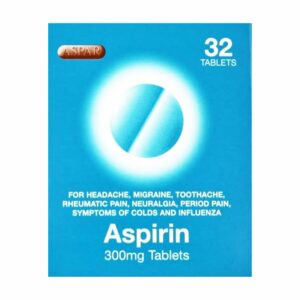
Aspirin 300mg (32 Tablets)
- Helps Prevent Further Heart Attacks & Strokes
- Can Be Used After Bypass Surgery
- Buy Online With Confidence From UK Registered Pharmacy
£0.99 Select options -
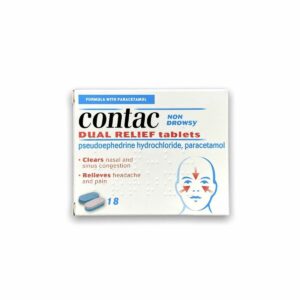
Contac Dual Relief Non-Drowsy – 18 Tablets
- Effective Nasal Congestion Relief
- Active Ingredients: Paracetamol & Pseudoephedrine
- Buy With Confidence From UK Registered Pharmacy
£7.69 Select options -
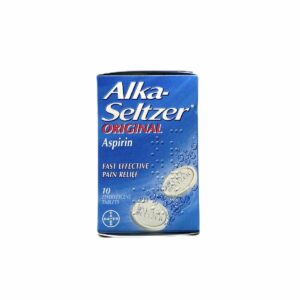
Alka-Seltzer Original – 10 Tablets
- Fast effective pain relief
- 10 effervescent tablets
- Main ingredient: Aspirin
£3.29 Add to basket -
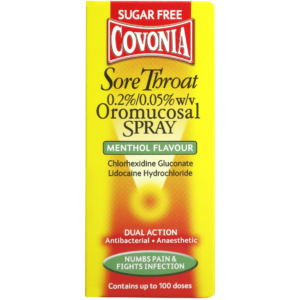
Covonia Oromucosal Spray – 30ml
- Numbs Pain & Fights Infection
- Active Ingredient : Lidocaine & Chlorhexidine
- Buy With Confidence From UK Registered Pharmacy
£8.39 Select options -

Fisherman’s Friend 25g
- Provides Relief For a Sore Throat and a Cough
- Buy With Confidence From UK Registered Pharmacy
- Next Day Delivery Available
£0.70 – £1.24 Select options -
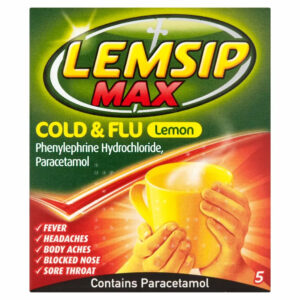
Lemsip Max Lemon Sachets – 5 Sachets
- Helps Fever, Blocked Nose, Sore Throat & Pain
- Active Ingredients : Phenylephrine & Paracetamol
- Buy With Confidence From UK Registered Pharmacy
£5.89 Select options -
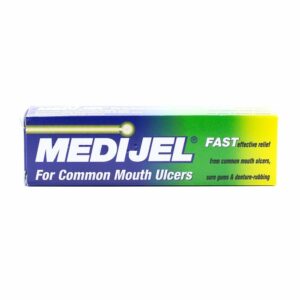
Medijel Gel For Mouth Ulcers 15g
- Active Ingredients: Lidocaine & Aminoacridine
- Fast Acting Gel To Relief Pain From Mouth Ulcers
- Next Day Delivery Available at Checkout
£4.29 Read more -

Flexiseq For Joint Wear & Tear
- Relieves Joint Pain And Early-Stage Arthritis
- Active Ingredient: Sequessome Vesicles
- Drug-Free Formulation
£12.19 – £21.89 Select options -
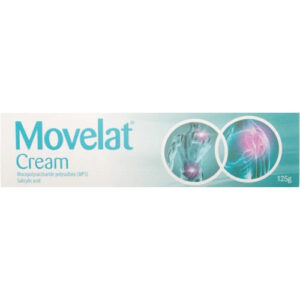
Movelat Cream 125g
- Active Ingredients: Mucopolysaccharide Polysulfate & Salicylic Acid
- Anti-Inflammatory Pain Relief Gel
- Next Day Delivery Available at Checkout
£15.49 Select options -
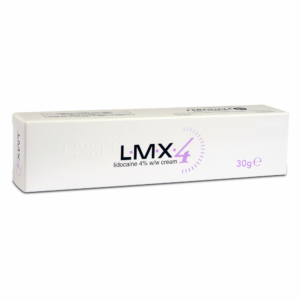
LMX4 Lidocaine 4% Cream – 30g
- Local anaesthetic
- Relieve pain whenever a needle needs to be inserted into a vein
- Active Ingredient: Lidocaine
£29.99 Select options -
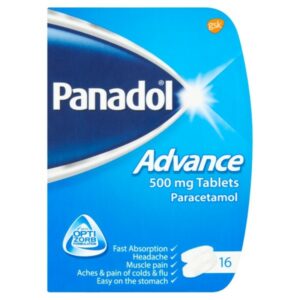
Panadol Advance 500mg Tablets – 16 Tablets
- Relieves Pain Related To Headaches, Muscles And More
- Absorbed Faster Than Regular Paracetamol
- Easy On The Stomach
£2.49 Add to basket -
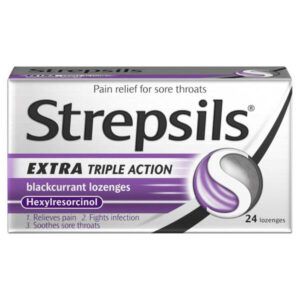
Strepsils Extra Triple Action Blackcurrant Lozenges – 24 Lozenges
- Effective Sore Throat Relief
- Active Ingredient: Hexylresorcinol
- Take Every 2-3 Hours
£5.59 Add to basket -
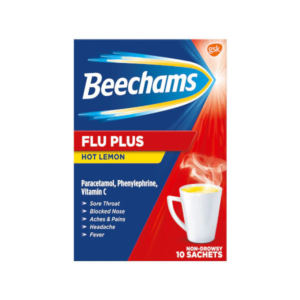
Beechams Flu Plus Hot Lemon – 10 Sachets
- Relieves Cold And Flu Symptoms
- Active Ingredients: Aspirin And Caffeine
- Also Treats Aches And Pains
£5.59 Select options -
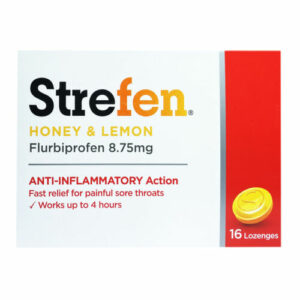
Strefen Throat Lozenges Honey & Lemon – 16 Lozenges
- Fast & long lasting relief for painful sore throats
- Anti-inflammatory action
- Contains Flurbiprofen 8.75mg
£6.09 Select options -

Tiger Balm Ointment
- Most Popular Pain Relief Products
- Suitable For Use In Anyone Over 2 Years
- UK Next Day Delivery Available At Checkout
£8.49 – £11.40 Select options -
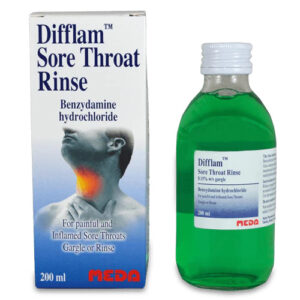
Difflam Sore Throat Rinse – 200ml
- For the relief of pain and inflammation in the throat and mouth
- To be rinsed or gargled
- Active Ingredient: Benzydamine Hydrochloride
£8.09 Select options -
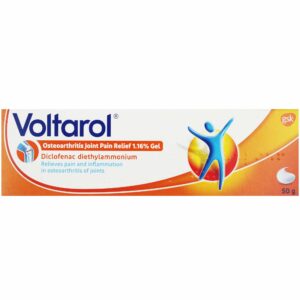
Voltarol 1.16% Osteoarthritis Joint Pain Relief
£7.89 – £19.09 Select options -
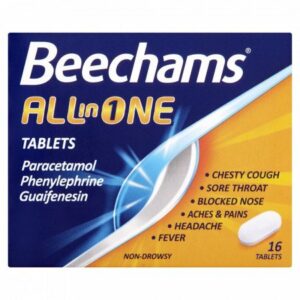
Beechams All In One Tablets – 16 Tablets
- Relieves Cold And Flu Symptoms
- Active Ingredients: Paracetamol, Guaifenesin And Phenylephrine Hydrochloride
- Non-Drowsy
£5.89 Select options -
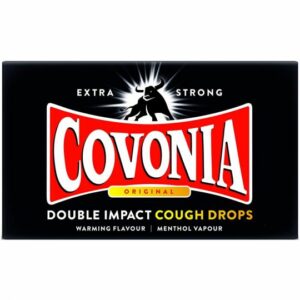
Covonia Double Impact Cough Drops
- Local pain-killer
- Relieve the symptoms of a sore and red throat
- Warming flavour
£2.09 – £2.39 Select options -
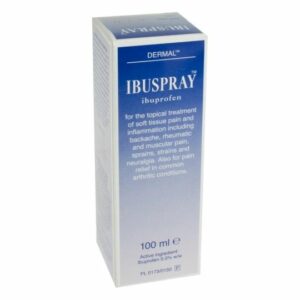
Ibuspray 5% Spray 100ml
- Relieves Aches And Pains In The Muscles And Joints
- Active Ingredients: Ibuprofen
- Fast-Acting Anti-Inflammatory
£14.49 Select options -
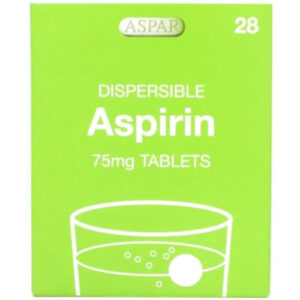
Aspirin 75mg Dispersible Tablets – 28 Tablets
- Helps prevent further heart attacks and strokes
- Can be used after bypass surgery
- Dispersible tablets for those who cannot swallow whole tablets
£0.99 Select options -
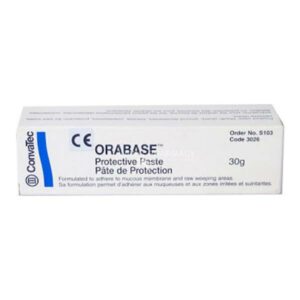
Orabase Protective Paste 30g
- Heals And Prevents Damage
- Sticks To Moist Areas
- Effective Relief From Mouth Pain
£5.49 Select options -
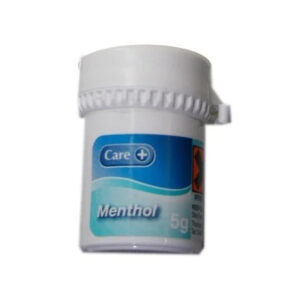
Menthol Crystals 5g
- Effective Relief For Blocked Nose
- Active Ingredient:Menthol Crystals
- Buy With Confidence From UK Registered Pharmacy
£3.09 Add to basket -
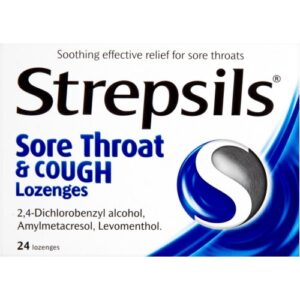
Strepsils Sore Throat and Cough – 24 Lozenges
- Effective Sore Throat Relief
- Take Every 2-3 Hours
- Buy With Confidence From UK Registered Pharmacy
£7.79 Select options -
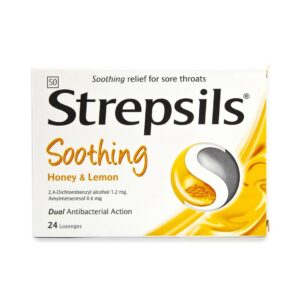
Strepsils Soothing Honey and Lemon Lozenges – 24 Lozenges
- Effective Sore Throat Relief
- Active Ingredients: Dichlorobenzyl Alcohol And Amylmetacresol
- Take Every 2-3 Hours
£6.39 Select options -
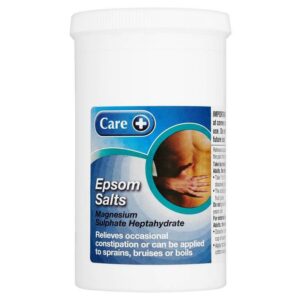
Epsom Salts 300g
- Active Ingredients: Magnesium Sulfate
- Effective Relief From Constipation
- Buy With Confidence From UK Registered Pharmacy
£4.99 Add to basket -

Ultra Chloraseptic Anaesthetic Throat Spray Cherry 15ml
- Active Ingredient: Benzocaine
- Numbs Pain Fast
- Contains 100 Sprays
£4.69 Select options -

-
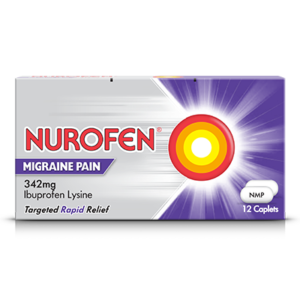
Nurofen Migraine Pain Caplets (12)
- Contains Ibuprofen Lysine, which is quickly absorbed in the body.
- Provides relief from headache and migraine pain.
- Up to 8 hours relief.
£5.19 – £7.99 Select options -
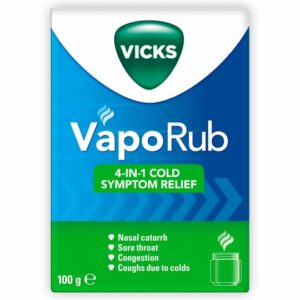
Vicks VapoRub 4-in-1 Cold Symptom Relief
- Effective Congestion Relief
- Buy With Confidence From UK Registered Pharmacy
- Next Day Delivery Available
£4.49 – £7.09 Select options -
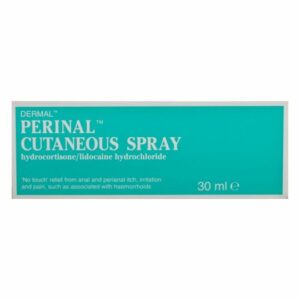
Perinal Cutaneous Spray – 30ml
- Relieves Pain & Itch Caused By Haemorrhoids
- Active Ingredient: Hydrocortisone and Lidocaine
- For Short-Term Use
£13.09 Select options -
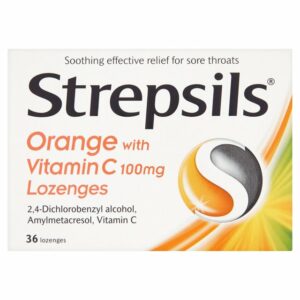
Strepsils Orange With Vitamin C – 36 Lozenges
- Effective Sore Throat Relief
- Take Every 2-3 Hours
- Buy With Confidence From UK Registered Pharmacy
£7.79 Select options -
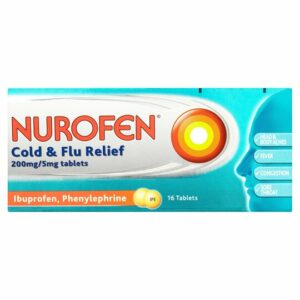
Nurofen Cold & Flu Relief 200mg/5mg – 16 Tablets
- Effective Cold & Flu Relief
- Active Ingredients: Ibuprofen & Phenylephrine
- Buy With Confidence From UK Registered Pharmacy
£7.49 Add to basket -

Nurofen Joint & Muscular Pain Relief Medicated Plasters 200mg (2)
- Easy To Apply
- Effective Short-Term Treatment Of Pain In Muscular Strains
- Pain Relief Lasts Up To 24 Hours
£11.39 Select options -
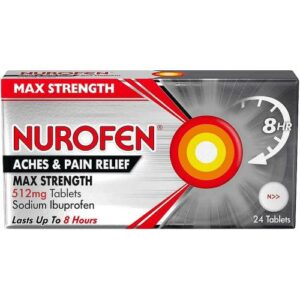
Nurofen Joint & Back Pain Relief 512mg – 24 Tablets
- Effective Pain Relief Treatment
- Easy To Take
- Can Be Used For Many Different Types of Pain
£14.09 Select options -

Panadol Extra Soluble Tablets – 24 Tablets
- Soluble tablets
- 500mg Paracetamol & 65mg Caffeine
- Clinically proven to provide more effective pain relief than standard paracetamol tablets
£5.39 Add to basket -
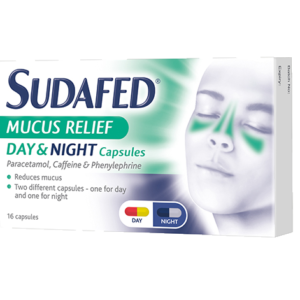
Sudafed Mucus Relief Day & Night Capsules – 16 Capsules
- Active Ingredients Paracetamol, Caffeine and Phenylephrine
- Both Daytime & Nighttime Relief
- Buy With Confidence From UK Registered Pharmacy
£6.29 Select options -
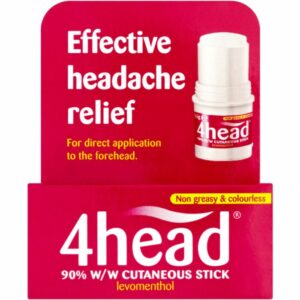
4head Cutaneous Stick
- Can Be Applied Whenever Required
- Buy With Confidence From UK Registered Pharmacy
- Next Day Delivery Available
£7.89 Add to basket -

Biofreeze Pain Relief Gel – 118ml
- Long lasting pain relief
- Analgesic containing ILEX
- Cold therapy proves fast, topical relief
£12.19 Add to basket -
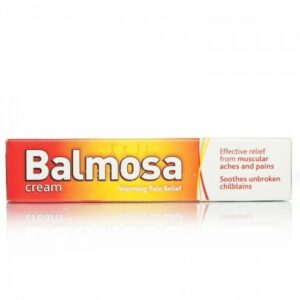
Balmosa Cream – 40g
- Relieves Aches And Pains In The Muscles And Joints
- Buy With Confidence From UK Registered Pharmacy
- Includes Free Prescription
£4.09 Read more -
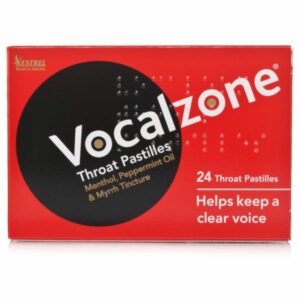
Vocalzone Throat Pastilles – 24 Pastilles
- Active Ingredients: Levomenthol Peppermint Oil & Myrrh Tincture
- Provides Effective Relief Of A Sore Throat
- Buy With Confidence From UK Resgistered Pharmacy
£5.49 Add to basket -
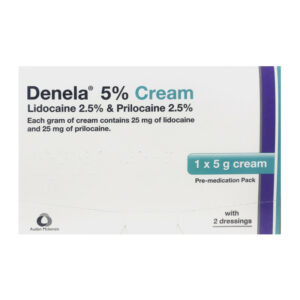
Denela 5% Cream
- Local Numbing Cream
- Active Ingredients: Lidocaine & Prilocaine
- Buy With Confidence From UK Registered Pharmacy
£4.89 – £24.49 Select options -
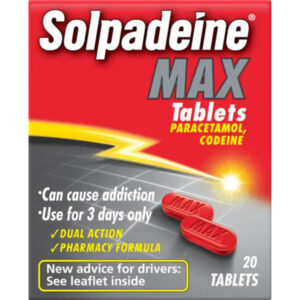
Solpadeine Max Tablets – 20 Tablets
- Dual action, pharmacy formula
- Contains paracetamol and codeine
- Provides relief for migraines, headache, period pain and more!
£7.49 Select options -
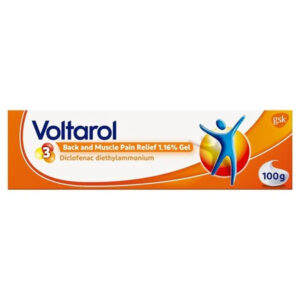
Voltarol Back and Muscle Pain Relief 1.16% Gel – 100g
- Contains a non-steroidal anti-inflammatory drug (NSAID) called diclofenac
- Targets pain at its source
- For targeted local relief for pain and swelling in muscles, back and neck, as well as sprains, strains and bruises
£12.99 Add to basket -

Biofreeze Pain Relief Spray – 118ml
- 360° applicator gets those hard-to-reach places
- Analgesic containing ILEX
- Cold therapy proves fast, topical relief
£9.30 Add to basket -
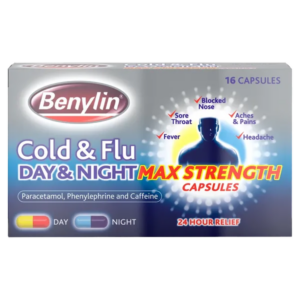
Benylin Cold & Flu Day & Night Max Strength Capsules (16)
- Eases Headaches
- Unblocks Airways
- Reduces Tiredness
£6.79 Select options
-
About Over-the-Counter Pain Medication
Over the counter (OTC) pain medications are essential for managing minor aches, pains, and fevers without a prescription. When used as directed, they offer a convenient and effective solution for pain relief.
Types of Pain Relievers: The main types of OTC pain relievers are:
Paracetamol: Effective for fever reduction and pain relief, suitable for all ages, including children. It has fewer gastrointestinal side effects but should be used carefully to avoid exceeding the recommended dosage, as it can affect the liver.
NSAIDs (Nonsteroidal Anti-Inflammatory Drugs): These include ibuprofen, aspirin, and naproxen, which are effective in reducing inflammation, pain, and fever. Suitable for pain from inflammation, such as arthritis or muscle aches, but may cause gastrointestinal issues if not used properly.
Choosing the Right Medication: Selecting the appropriate pain reliever should consider the type of pain, any pre-existing health conditions, and other medications being taken. It’s essential to read labels carefully and consult with healthcare providers if you have conditions like liver or kidney disease, or if you are taking other prescription medications.Usage Tips: Always follow the recommended dosages on the packaging and be aware of any potential interactions with other medications you might be using. Consult a healthcare provider or pharmacist if you’re unsure about the best choice for your needs.
-
Symptoms
Over-the-counter (OTC) pain medications are commonly used for a variety of symptoms that signal mild to moderate pain, inflammation, or discomfort. Here are some common symptoms that might lead someone to consider taking OTC pain relief:
Headaches and Migraines: OTC pain relievers like ibuprofen and paracetamol are often effective for reducing the pain associated with headaches and migraines.
Menstrual Cramps: NSAIDs (Nonsteroidal Anti-Inflammatory Drugs) such as ibuprofen can be particularly effective in alleviating the pain and discomfort caused by menstrual cramps due to their anti-inflammatory properties.
Muscle Aches and Stiffness: After physical activity or due to minor injuries, muscle aches can occur. NSAIDs or paracetamol can help reduce these symptoms.
Arthritis Pain: For chronic conditions like arthritis, which involve joint pain and swelling, NSAIDs can be beneficial in managing daily discomfort.
Fever: Paracetamol is commonly used to reduce fever and alleviate the discomfort that comes with it.
Toothaches: Pain from dental issues can be temporarily managed with OTC pain relievers until professional treatment is obtained.
Post-surgical Pain: Following minor surgeries, doctors might recommend OTC pain medications to manage recovery pain.
Back Pain: For non-specific back pain that isn’t severe, OTC medications may provide relief.It’s important to select the appropriate type of pain reliever based on the symptoms and the underlying causes. For instance, NSAIDs reduce inflammation and are suitable for conditions like arthritis and menstrual cramps, while paracetamol is preferable for reducing fever and relieving pain without gastrointestinal side effects.
-
Diagnosis
The diagnosis of conditions requiring over-the-counter (OTC) pain relief generally starts with a thorough medical history and a physical exam. Health care providers assess symptoms and the history of any injuries or activities that might contribute to the pain.
Medical History and Symptoms Evaluation: During the initial consultation, the doctor will ask about the pain’s onset, duration, intensity, and characteristics. This includes whether the pain is sharp, dull, constant, or intermittent. Understanding previous medical conditions, ongoing health issues, and any recent injuries is crucial for an accurate diagnosis.
Physical Examination: The healthcare provider will examine the area of pain, assessing for any tenderness, swelling, or abnormalities. This might include checking the alignment, range of motion, and physical condition of affected areas, such as the neck, back, or joints.
Diagnostic Tests: While often not necessary for minor pain, imaging tests like X-rays, MRI, or CT scans may be used if a more serious condition is suspected, such as fractures, arthritis, or other internal issues. For example, X-rays can help reveal issues with bones and joints, while MRI provides a detailed image of soft tissues and nerves.
Additional Tests: In certain cases, especially if the pain is persistent or complex, additional tests might be recommended. These could include blood tests to check for markers of inflammation or infection, or specialized nerve function tests to diagnose conditions affecting the nervous system.
It’s important to consult with healthcare professionals to ensure an accurate diagnosis and appropriate management of any pain. Over-the-counter pain medications like NSAIDs or paracetamol are effective for many types of pain but should be used as directed to avoid potential side effects. For chronic or severe pain, a more detailed evaluation and tailored treatment plan may be necessary.
-
Treatments
Over-the-counter pain relief medications play a critical role in managing symptoms associated with mild to moderate pain. My Pharmacy offers a range of OTC options that can address various pain-related issues effectively:
Co-codamol 8mg/500mg Tablets – This medication combines codeine phosphate and paracetamol to provide relief for acute moderate pain. It’s suitable for short-term use due to its opioid content, which can cause addiction if used long-term. It’s especially useful for pain that isn’t relieved by other analgesics like paracetamol or ibuprofen alone.
Ibuprofen Tablets – A non-steroidal anti-inflammatory drug (NSAID), ibuprofen is commonly used to relieve mild to moderate pain. It can also reduce high temperatures (fever) and inflammation, making it a versatile choice for a variety of conditions, such as headaches, menstrual cramps, dental pain, and muscle aches.
Nurofen Plus Tablets – Containing both codeine phosphate and ibuprofen, this medication has a dual-action formula that works to relieve pain and inflammation. It’s potent for conditions where inflammation contributes to the pain, such as in some types of arthritis. Due to the codeine content, it is recommended for use for no more than three days.
Solpadeine Max Tablets – These are formulated for fast-acting relief from acute moderate pain. Containing both paracetamol and codeine, they provide a strong pain relief option for when standard painkillers do not suffice. Like Co-codamol, due to the risk of addiction, it’s advised to use Solpadeine Max for short periods.
Over the counter medications offer effective relief for temporary pain, helping you to return to your daily activities with reduced discomfort. It’s important to adhere to the recommended dosages and to be aware of the potential risks, especially concerning the opioid content in some medications, which can lead to dependency if used long-term.
-
Prevention Strategies
Preventing pain and managing symptoms effectively often involves a combination of lifestyle adjustments and proactive measures. Here are several strategies to help prevent and cope with pain symptoms:
Regular Exercise and Movement Therapy: Engaging in physical activity can alleviate certain types of pain. Activities such as stretching, yoga, or tai chi can increase flexibility and strength, reducing the risk of pain caused by muscular tension and joint issues. For those with chronic pain, working with a physical or occupational therapist can provide tailored exercises that gradually retrain the body without exacerbating symptoms.
Mindfulness and Relaxation Techniques: Incorporating mindfulness practices such as meditation or focused breathing can help manage the stress that often exacerbates the experience of pain. These techniques can promote relaxation and ease mental and emotional contributions to pain.
Good Sleep Hygiene: Quality sleep is crucial for pain prevention and recovery. Establishing regular sleep patterns and ensuring a comfortable sleeping environment can significantly impact pain management.
Healthy Diet: A balanced diet that is low in processed foods and rich in fruits, vegetables, whole grains, and lean proteins can help maintain overall health and prevent conditions associated with pain, such as inflammation.
Proper Hydration: Staying hydrated is important for overall bodily functions and can also help reduce some types of pain, such as headaches or cramps.
Stress Management: Since stress can intensify the perception of pain, employing stress management techniques, such as setting achievable goals, practicing gratitude, and staying positive, is essential.
Moderation and Pacing: For those with chronic pain, it’s important to avoid overexertion. Setting realistic goals and taking regular breaks during activities can prevent pain flare-ups.
Avoiding Injuries in Sports: Proper warm-ups and cool-downs, using the correct technique, wearing appropriate safety gear, and listening to your body can prevent sports-related injuries that cause pain.
Preventative Healthcare: Regular check-ups can help manage health conditions that may lead to pain and provide an opportunity to discuss any early symptoms of pain with a healthcare provider.Each individual’s situation is unique, so it’s important to find the combination of strategies that works best for you. Remember that it’s always wise to consult with a healthcare professional before starting any new health regimen.












